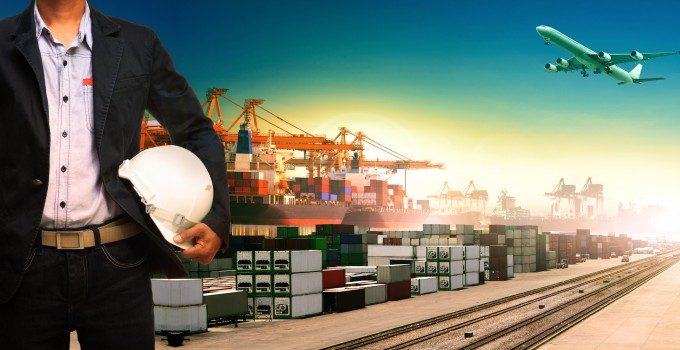Smart containers are the key to a more-visible supply chain
Current pressures on the international supply chain, and the increased volatility expected in the future, ...

The clock is ticking on the mandatory weighing of containers in the supply chain.
There are just over than 200 days to go before containers will be ‘shut out’ from ships if they do not have a verified weight, yet there are still more questions than ...

Comment on this article
Mason Kratz
November 26, 2015 at 11:21 pmWeighing at port is far too late in the supply chain. The whole reason for this law is to make shippers (whoever they may be) accountable for the packing of the containers, full stop. The port has no influence on how this happens. That being said, there certainly is some direction needed on this legislation, stating that VGMs should be communicated “Sufficiently in advance” is not good enough. The industry needs a standard, 12hrs? 24hrs? Once this is relayed to all stakeholders systems can be defined and implemented. Olitek in Australia have developed solutions to both methods of weighing that will be done on-site, where the container is packed, making the voyage safer for road, rail, and water.
Andy Lane
November 27, 2015 at 1:42 amAs a haulier, I would be keen to know the actual weight before I embark on a 240 mile journey from Manchester and try to navigate the “dock-spur round-a-bout”.
Shippers, or BCO’s (NVOCC, 3PL, Forwarders, etc) will need to select packing houses which have the ability to weigh either the laden container (less likely) or the component cargo. A 2-ton scale in a warehouse is not a massive investment, and that investment can be recovered through a “weighing surcharge”. Those who cannot weigh cannot pack!
Deferring the weighing to the terminal is not going to fly, whether that be at the in-gate or worse still using the terminal lifting equipment. For terminal and ship planning processes, the actual weight needs to known several hours before container arrival and 1 days before vessel arrival. Although a vast minority, weigh-bridges do not deal with twinned 20fts very well.
A standardised process is needed for sure. Ideally the information flow is: Shipper->Carrier->Terminal. All parties need to come together to define a single best practice, a work-group comprising of; Shippers, BCO’s, Hauliers, Terminals and Carriers. This can be driven by The LoadStar (I will help you) or by a Shippers Association or other body with some reach and standing within the industry. And it is probably good to start immediately after Christmas if not before.
The UK and Europe are not likely to be the major challenge areas. Just imagine the additional complexity in a country like China!
Distrait
December 01, 2015 at 11:19 amMost of modern terminals are fitted with weight bridges for local cargo
The biggest issue for the seaborne leg of transportation will be for transhipment cargo
Problem is that they rely on 1st carrier weight list for transhipment cargo coming from ports that are not that stringent on this issue.
Vessels upsize + most of containers operators in VSA will make very soon imperative container weighting at 1st carrier discharge
Andy Lane
December 01, 2015 at 12:06 pmThe SOLAS regulation states that a certified weight must be presented prior to loading to a vessel – and that includes feeder vessels. But probably excludes river barges. So a port, nor a sea-going vessel operator can elect not to be stringent. There should not be any issues with transhipment.
Whereas the deep-sea large container vessels will suffer some issues when weights are mis-declared in terms of stack weights and lashing, it would take a huge quantity of mis-declared containers to cause it any stability or safety issues. The ships which are most sensitive to weights are the smaller ones, less than 1,000 TEU capacity, where just a few mis-declared containers unfortunately stowed on one side can create horrible stability issues and have led previously to some incidences of cap-size.
distrait
December 01, 2015 at 2:07 pmWhen visiting some secondary ports, secondary because shallow water, not because small volumes, you can be stunned about the way weights are declared to the feeder operator
Then, in case of casualty on mother vessel, it’s quite difficult to assess which box travelling under which BL is responsible for lack/excess stab or streching effects or inaccurate drafts and this is true for whatever big or small vessels
On some trades where most of cargo is rough commodities, cargo weight is an open cheat
Mike Wackett
December 02, 2015 at 2:08 pmMany thanks for the input, Mason, Andy and Distrait on this very important issue for the supply chain that has hitherto seemingly appeared under the radar of many stakeholders.
The Loadstar will certainly being doing its part from early in the New Year to help raise the profile of the forthcoming container weighing requirement and we very much appreciate your offer of assistance in this respect Andy.
Mason Kratz
December 03, 2015 at 12:15 amFully agree Andy, although many incidents on vessels carrying 10000+ TEUs have occurred. The issues for insurers may not be only the ship, but also lost cargo at sea, at port, or even during transport to / from port. I would certainly be able to provide some input and fully support a best practice working group. I speak to forwarders, 3PL, NVOCCs etc. every day and still, at this rather late stage, come across many that are either completely unaware of the legislation, are waiting for advice, or just not interested.